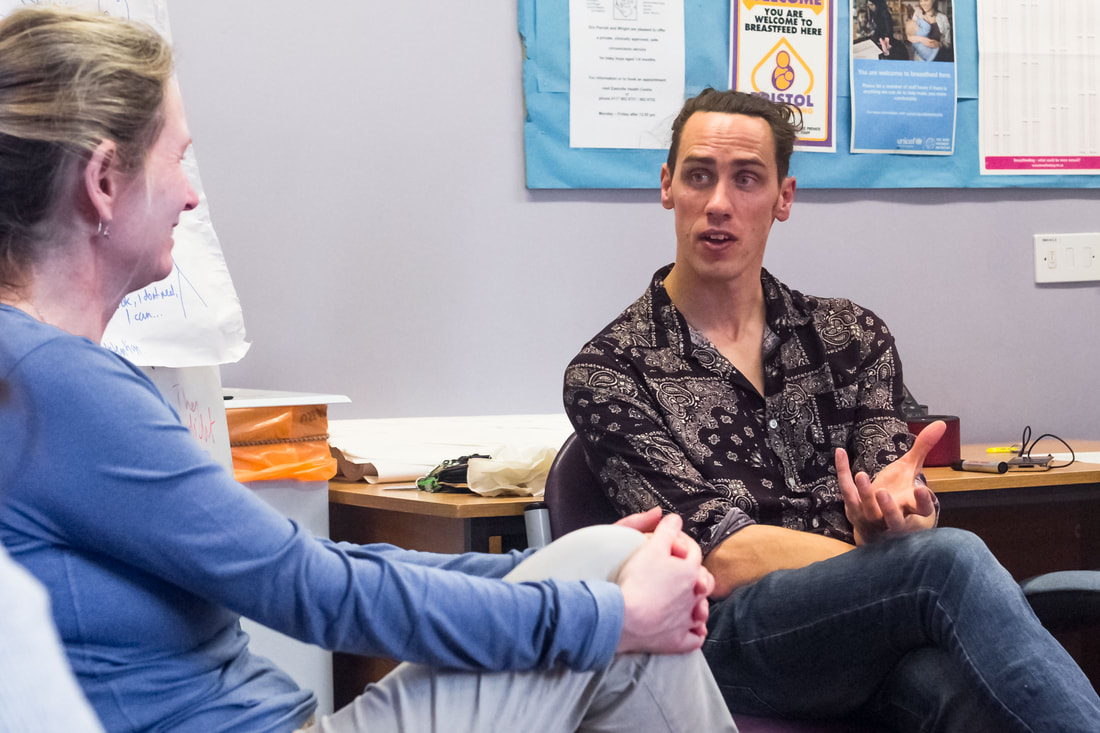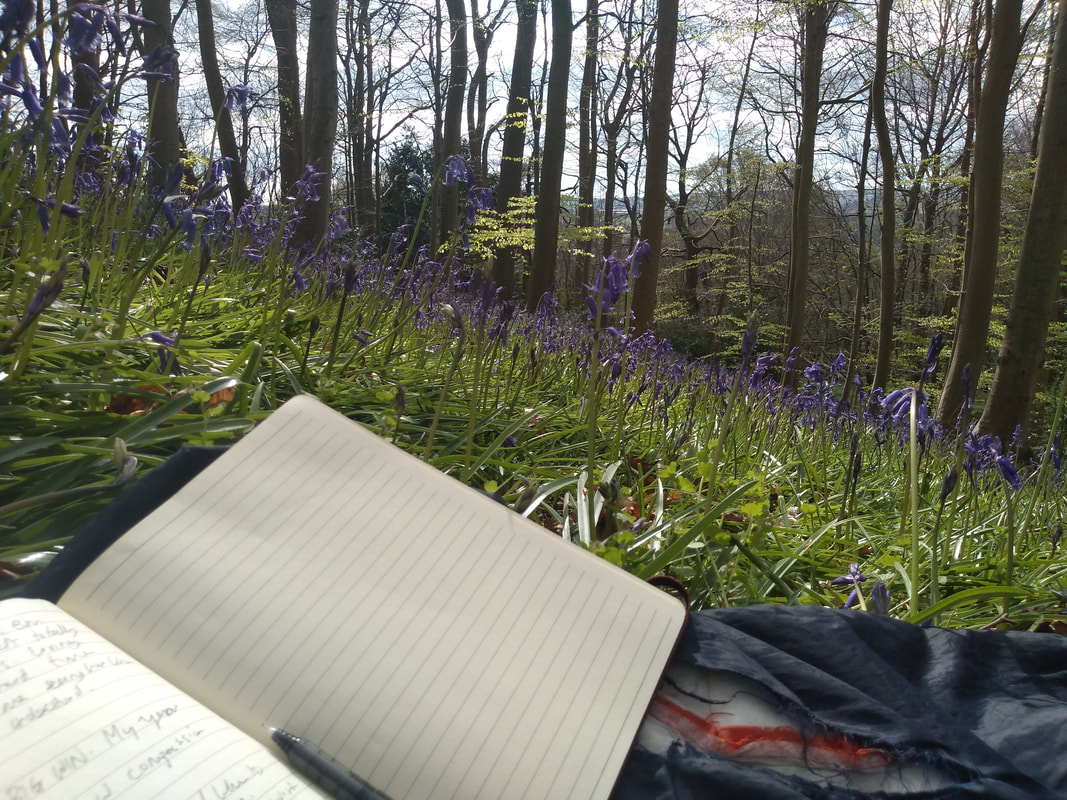The real reason I posted this is because the three videos at the bottom blew my socks off. If you want just skip to them - they are worth it!
I recently began a formal qualification in Counselling and I'm loving it. I've been a trained coach and mindfulness practitioner for years, but often I found the biggest shifts occur in people when they were given space to express repressed emotions and all I had to do was counsel them. In this short blog I'll write about the main skills and styles in counselling.
I recently began a formal qualification in Counselling and I'm loving it. I've been a trained coach and mindfulness practitioner for years, but often I found the biggest shifts occur in people when they were given space to express repressed emotions and all I had to do was counsel them. In this short blog I'll write about the main skills and styles in counselling.
Foundation Counselling Skills | Advance Counselling Skills |
| First the basics: it's really important to have these skills honed and practiced.
| As practice creates more sensitivity and theoretical knowledge continues we learn and practice:
|
Self Reflection and Personal Development
We all have blind spots and as 'helpers' we must work on becoming aware of our own, so that we are capable of holing the counselling space and not accidently end up being counselled by the client. Blind spots could be a belief that some character trait is bad, or a leaning towards certain relationship styles, or a slight prejudice against a certain type of person. Self reflection helps us see and understand ourselves.
Integration of blind spots
Our job then is to 'integrate them' so that we are less likely to fall into automatic reaction. Integration is the process of maturity, where we discover parts of ourselves that we repress or abandon and bring them into our awareness and make them more cooperative towards our values and goals (This is my definition. There are many others). An example for myself is I know my mind is critical of 'weakness' (because of my past conditioning) and I integrate that by priming useful reminders for myself and I use mindfulness to see a person as they are, not how I think they should be. In a session now, if I notice my critical mind I will thank it and take a breath, remind it that it's OK, and bring my full attention back to the present moment. This could happen within a single second.
We all have blind spots and as 'helpers' we must work on becoming aware of our own, so that we are capable of holing the counselling space and not accidently end up being counselled by the client. Blind spots could be a belief that some character trait is bad, or a leaning towards certain relationship styles, or a slight prejudice against a certain type of person. Self reflection helps us see and understand ourselves.
Integration of blind spots
Our job then is to 'integrate them' so that we are less likely to fall into automatic reaction. Integration is the process of maturity, where we discover parts of ourselves that we repress or abandon and bring them into our awareness and make them more cooperative towards our values and goals (This is my definition. There are many others). An example for myself is I know my mind is critical of 'weakness' (because of my past conditioning) and I integrate that by priming useful reminders for myself and I use mindfulness to see a person as they are, not how I think they should be. In a session now, if I notice my critical mind I will thank it and take a breath, remind it that it's OK, and bring my full attention back to the present moment. This could happen within a single second.
Styles of Counselling
Everyone has their own style, based on their own understanding of how the psyche actually works. Here is some basic history of the main influences. The three videos below are incredibly useful in showing three main styles used today. We begin though with two big pioneers from the early 1900's:
- Sigmund Freud was pioneered psychoanalysis using techniques like free association (uncensored expression) and discovered transference (projecting an idea of who someone is onto them without realising it). He had some wild ideas, but his model of the Id (natural drives), Ego (conscious awareness mediating the other two) and super-Ego (social conditioning) is still used today. His idea is to talk to people and make parts of the unconscious more conscious. Others followed this with different interpretations:
- Carl Jung modelled the idea of 'archetypes' (a concept "borrowed" from anthropology to denote supposedly universal and recurring mental images or themes). The main of these that are still used today are the Shadow (repressed parts), Persona (mask of personality), the collective unconsciousness (the interconnected ideas and impulses felt globally) and the Wounded Healer (what drives us to care and treat one another). Jung loved dream analysis as a way of accessing the psyche.
| | | |
The three big modern styles - check out the videos!
These practitioners from 1960-1990 are shown in striking contrast on the videos above.
These practitioners from 1960-1990 are shown in striking contrast on the videos above.
- Carl Rogers founded humanistic approach (Client Centred), which prioritised a genuine and empathic relationship between client and helper, through which healing and integration occurs naturally.
- Fritz Perls coined the term 'Gestalt therapy' which seeks to raise the awareness of people as a process of sensation, perception, bodily feelings, emotion, and behaviour, in the present moment. He would use quite extreme noticing of body language and encouragement to develop it and express from it. He would also use roleplaying to help people switch roles and see how things play out in the mind.
- Albert Ellis founded Rational Emotive Behaviour Therapy (REBT) - a precursor to modern CBT (Cognitive Behavioural Therapy). He saw how unconscious beliefs ran the show of our actions and feelings and sought to make people more aware of them through talking and exposing them to observation.
My counselling and coaching offer
I work with all these modes in my work, alongside more goal oriented coaching. This blog talks about the difference . If you feel drawn to a particular type of therapy contact me and let's work together. We can all use a little help to discover our repressed patterns of thought and behaviour and integrate them to become more empowered and fulfilled people.
I work with all these modes in my work, alongside more goal oriented coaching. This blog talks about the difference . If you feel drawn to a particular type of therapy contact me and let's work together. We can all use a little help to discover our repressed patterns of thought and behaviour and integrate them to become more empowered and fulfilled people.

